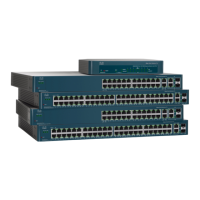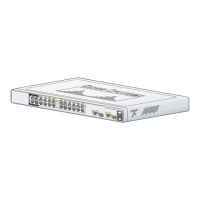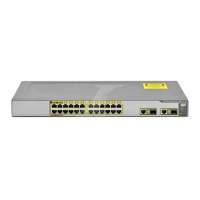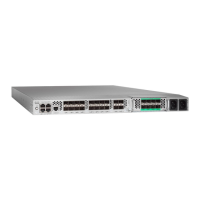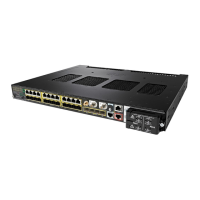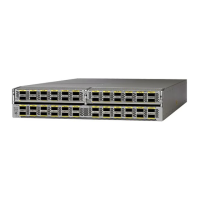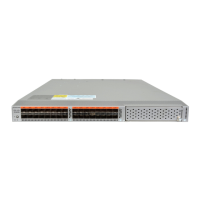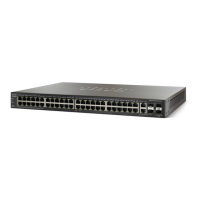







Do you have a question about the Cisco 500 Series and is the answer not in the manual?
| Model | Cisco 500 Series |
|---|---|
| Category | Switch |
| Mounting | Rack-mountable |
| Management | Web-based, CLI, SNMP |
| Ports | 24, 48 |
| Port Speed | 10/100/1000 Mbps |
| PoE Support | Available on some models |
| Switching Capacity | Up to 176 Gbps |
| MAC Address Table Size | 16, 000 entries |
| Security | ACLs, 802.1X |
| Quality of Service (QoS) | Yes |
| Dimensions | Varies by model |
| Weight | Varies by model |
| Humidity | 10% to 90% non-condensing |
| Power Supply | Internal |
| Power Consumption | Varies by model |
| Jumbo Frame Support | Up to 9216 bytes |
Lists all items included in the switch package for setup and installation.
Describes the two primary methods for physically installing the switch: on a flat surface or in a standard rack.
Details important environmental factors to avoid, such as high ambient temperature, to ensure proper operation.
Provides a step-by-step guide for attaching the necessary mounting hardware to the switch for rack installation.
Outlines the steps for connecting network devices to the switch using Ethernet cables and port indications.
A table detailing the Power over Ethernet capabilities, including power output and supported standards for various switch models.
Important cautions and guidelines for connecting to PoE networks and handling Power Sourcing Equipment (PSE) and Powered Devices (PD).
Verifies computer requirements and introduces the two main methods for switch management: web-based interface and CLI.
Explains how to access the switch's web-based management interface using its default IP address.
Detailed steps for configuring your computer's IP and accessing the switch via its IP address on the network.
Instructions for connecting to and configuring the switch using a console port and terminal emulation software.
Visual aids and descriptions to identify stack ports on different 500 series switch models for stacking.
Information on default stack ports, speed configurations, and unit ID management for stacking.
Explains the various operational modes for switches in a stack, such as Standalone, Native, and Hybrid.
Outlines typical stacking configurations, including supported models and their respective stack port speeds.
Details specific stacking options, port configurations, and speeds for 500X series switches.
Details specific stacking options, port configurations, and speeds for SF/SG 500 series switches.
Describes how to configure SF/SG 500 series for standalone operation, using stack ports as regular network ports.
Introduces the front panel of the switch, highlighting the location of ports and LEDs.
Illustrates port layouts on switch sides and explains RJ-45 Ethernet and SFP port functions.
Details the status and meaning of Master, Fan, System, Stack ID, and port LEDs for operational status.
Describes Gigabit/SFP port LEDs and the function of the reset button and back panel ports.
Provides instructions on how to reboot the switch or perform a factory default reset using the reset button.
Guides users on how to test network connectivity to the switch using the ping command.
Addresses common connectivity problems, their causes, and resolutions, including bad connections and incorrect IP addresses.
Discusses troubleshooting scenarios related to IP routing between subnets and unusually long network access times.
Provides links and contact information for accessing Cisco's support community, resources, and firmware downloads.
Lists resources for product documentation, regulatory compliance information, and warranty details.
